
The Nilo-Saharan languages are a proposed family of African languages spoken by somewhere around 70 million speakers, mainly in the upper parts of the Chari and Nile rivers, including historic Nubia, north of where the two tributaries of the Nile meet. The languages extend through 17 nations in the northern half of Africa: from Algeria to Benin in the west; from Libya to the Democratic Republic of the Congo in the centre; and from Egypt to Tanzania in the east.
Shabo is an endangered language and likely language isolate spoken by about 400 former hunter-gatherers in southwestern Ethiopia, in the eastern part of the South West Ethiopia Peoples' Region.

The Koman languages are a small close-knit family of languages located along the Ethiopia–Sudan border with about 50,000 speakers. They are conventionally classified as part of the Nilo-Saharan family. However, due to the paucity of evidence, many scholars treat it as an independent language family. Among scholars who do accept its inclusion within Nilo-Saharan, opinions vary as to their position within it.
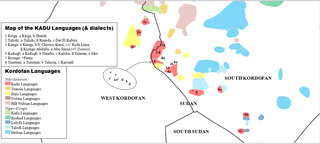
The Kadu languages, also known as Kadugli–Krongo or Tumtum, are a small language family of the Kordofanian geographic grouping, once included in Niger–Congo. However, since Thilo Schadeberg (1981), Kadu is widely seen as Nilo-Saharan. Evidence for a Niger-Congo affiliation is rejected, and a Nilo-Saharan relationship is controversial. A conservative classification would treat the Kadu languages as an independent family.
The Surmic languages are a branch of the Eastern Sudanic language family.

The languages of Ethiopia include the official languages of Ethiopia, its national and regional languages, and a large number of minority languages, as well as foreign languages.
Awlad Mana is an ethnic group of Sudan. It is a minority, that speaks Zaghawa, a Chad-Saharan language. They number more than 150,000 people.
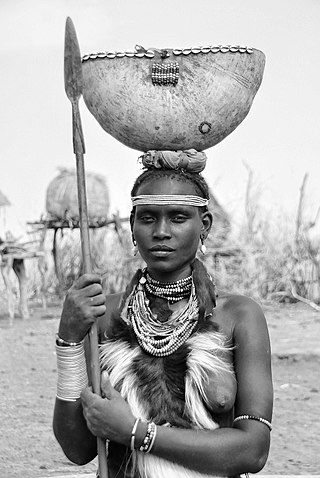
The Daasanach are an ethnic group inhabiting parts of Ethiopia, Kenya, and South Sudan. Their main homeland is in the Debub Omo Zone of the Southern Nations, Nationalities, and People's Region, adjacent to Lake Turkana. According to the 2007 national census, they number 48,067 people, of whom 1,481 are urban dwellers.

The Gumuz are an ethnic group speaking a Nilo-Saharan language inhabiting the Benishangul-Gumuz Region in western Ethiopia, as well as the Fazogli region in Sudan. They speak the Gumuz language, which belongs to the Nilo-Saharan family. The Gumuz number around 250,000 individuals.
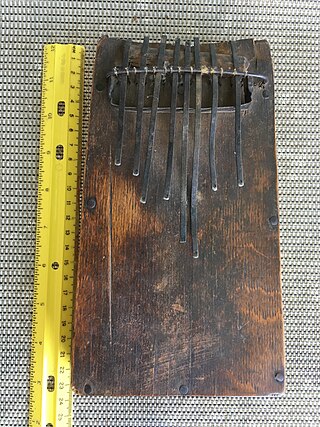
The Majang people, or Majangir, live in southwestern Ethiopia and speak a Nilo-Saharan language of the Surmic cluster. The 1998 census gave the total of the Majangir population as 15,341, but since they live scattered in the hills in dispersed settlements, their actual total number is undoubtedly much higher. They live around cities of Tepi, Mett'i, and scattered southwest of Mizan Teferi and towards Gambela.
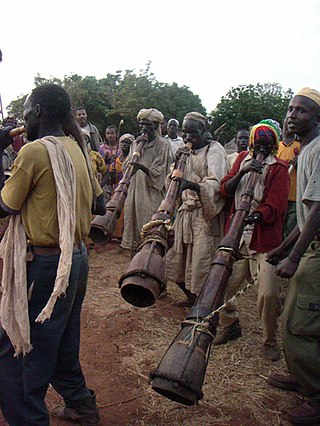
The Berta (Bertha) or Funj or Benishangul are an ethnic group living along the border of Sudan and Ethiopia. They speak a Nilo-Saharan language that is not related to those of their Nilo-Saharan neighbors. The total population of Ethiopian-Bertas in Ethiopia is 208,759 people. Sudanese-Bertas number around 180,000.

The Kwama, are a Nilo-Saharan-speaking community living in the Sudanese-Ethiopian borderland, mainly in the Mao-Komo special woreda of the Benishangul-Gumuz Region in Ethiopia. They belong, culturally and linguistically, to the Koman groups, which include neighboring communities such as the Uduk, Koma, and Opuuo. Although they traditionally occupied a larger territory, they have been forced to move to marginal, lowland areas by the Oromo from the 18th century onwards. In some villages Kwama, Oromo and Berta live together. The Kwama are often called "Mao" by other groups, especially by the Oromo. The people who live in the southern area and near the Sudanese borderland often call themselves "Gwama" and use the term "Kwama" to refer to those living further to the south and in Sudan. These other "Kwama" are usually known by anthropologists as Koma or Komo. In recent years, many people belonging to this ethnic group have been resettled by the Ethiopian state in order to provide them with clinics and schools.

The Majang language is spoken by the Majangir people of Ethiopia. Although it is a member of the Surmic language cluster, it is the most isolated one in the group. A language survey has shown that dialect variation from north to south is minor and does not seriously impede communication. The 2007 Ethiopian Census lists 6,433 speakers for Majang (Messengo), but also reports that the ethnic group consists of 32,822 individuals. According to the census, almost no speakers can be found in Mezhenger Zone of Gambela Region; a total of eleven speakers are listed for the zone, but almost 10,000 ethnic Mejenger or Messengo people.
The Komuz languages are a proposed branch of the Nilo-Saharan language family which would include the Koman languages, the Gumuz languages and the Shabo language, all spoken in south-eastern Sudan and western Ethiopia. Nilo-Saharan specialists have vacillated on a genealogical relationship between the Koman and Gumuz languages, a relationship called Komuz. Greenberg (1963) had included Gumuz in the Koman language family. Bender classified them together in a distant relationship he called Komuz, but by 1996 he had reversed himself, though he kept both groups in core Nilo-Saharan. Dimmendaal (2008) kept them together, though expressed doubts over whether they belonged in Nilo-Saharan, later referring to Gumuz as an isolate (2011). Ahland, on the basis of new Gumuz data, resurrected the hypothesis. Blench (2010) independently came to the same conclusion and suggested that the Shabo language might be a third, outlying branch. The classification of Shabo is difficult because of a strong Koman influence on the language that is independent of any genealogical relationship between them. Schnoebelen (2009), moreover, sees Shabo as a likely isolate.
Hozo is an Afroasiatic language spoken mostly in the Kondala woreda of Mirab Welega Zone by peoples generically known as "Mao". There are smaller groups of Hozo speakers in Mana Sibu woreda. The term Hozo is usually understood by the Mao to refer to a clan. Hozo speakers prefer to call themselves Amo. Hozo and Seze are sometimes called Begi Mao. Hozo is spoken by roughly 3,000 people in Ethiopia. Hozo is also a clan in the Begi area. The Hozo language is also known as Begi-Mao and Mao of Begi. Its classification is Afro-Asiatic, Omotic, and Mao. The word Mao is Omotic and means ‘man; people’, occurring as [ma:ɪ] in Seze and as [mɔ:] in Hozo. Mao is frequently used as an ethnic term. There is a kind of Mao identity across language differences in Ethiopia. While it is generally accepted today that Omotic is one of the primary branches of the Afro-Asiatic family, the position of the four languages Hozo, Seze, Ganza and Northern Mao is still being discussed. The Mao languages are the least documented within Omotic, and Omotic itself is the least documented of the Afroasiatic groups.

The Kwegu are an ethnic group that lives on the western banks of the Omo River in the newly formed South Ethiopia Region. Some members of the Kwegu also live on the eastern banks of the river among the Mursi. Previously they were hunter-gatherers, but today they are engaged in a mixed economy of hunting, farming, beekeeping, and fishing.
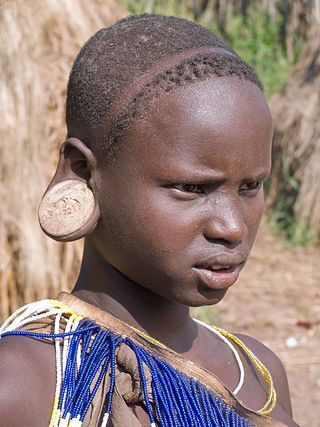
Suri is a collective name for three ethnic groups mainly living in Suri woreda, in southwestern Ethiopia. They share many similarities politically, territorially, culturally and economically but speak different languages. They all speak South East Surmic languages within the Nilo-Saharan language family, which includes the Mun, Majang, and Me'en people's languages.

South Sudan is home to around 60 indigenous ethnic groups and 80 linguistic partitions among a 2021 population of around 11 million. Historically, most ethnic groups were lacking in formal Western political institutions, with land held by the community and elders acting as problem solvers and adjudicators. Today, most ethnic groups still embrace a cattle culture in which livestock is the main measure of wealth and used for bride wealth.

The Banna people, also Banya, are an Omotic ethnic group in Ethiopia that inhabit the Lower Omo Valley, primarily between the Weyto and Omo rivers. They live in an area between the towns of Gazer and Dimeka, with the traditional area of the Banna being divided into two ritual regions: Ailama and Anno. According to the 2007 census, they number at around 47,000 individuals. They engage primarily in agriculture and supplement this by pastoralism, hunting, and gathering. They are mainly Muslim, however, several thousand are Christian, and they have their own king.
The Kujarke people are a little-known ethnic group of the Ouaddaï Region in eastern Chad and South Darfur, Sudan. They speak Kujargé, a divergent, unclassified Afro-Asiatic language. Their current population and locations are unknown due to the war in Darfur. Furthermore, they have not been previously recorded as a separate ethnic group by any government or foreign aid organization.
Anbessa, T. and P. Unseth, 1989. "Toward the classification of Shabo (Mikeyir)." In M. Lionel Bender (ed.): Topics in Nilo-Saharan linguistics. Nilo-Saharan, 3. Hamburg: Helmut Buske, pp. 405–18.














